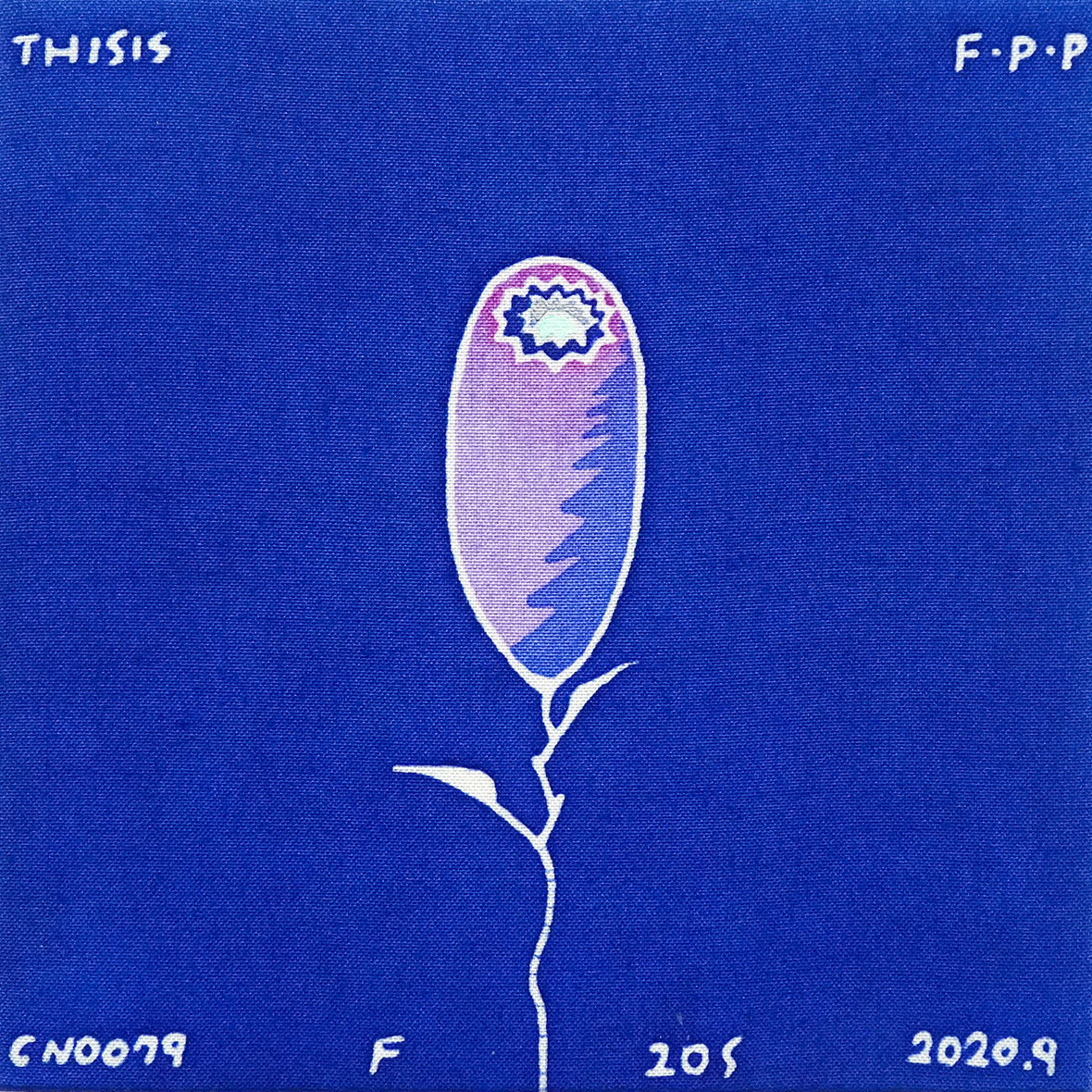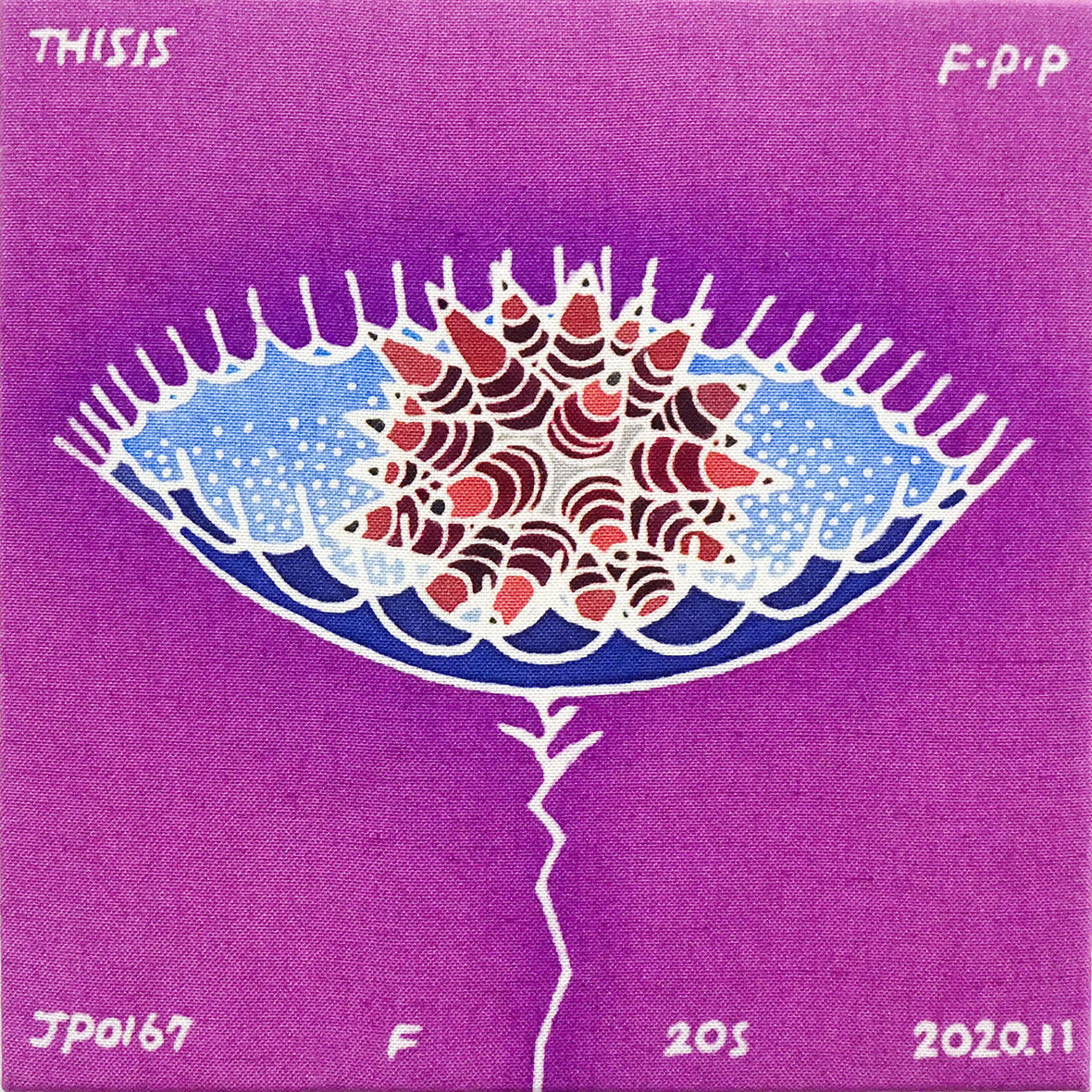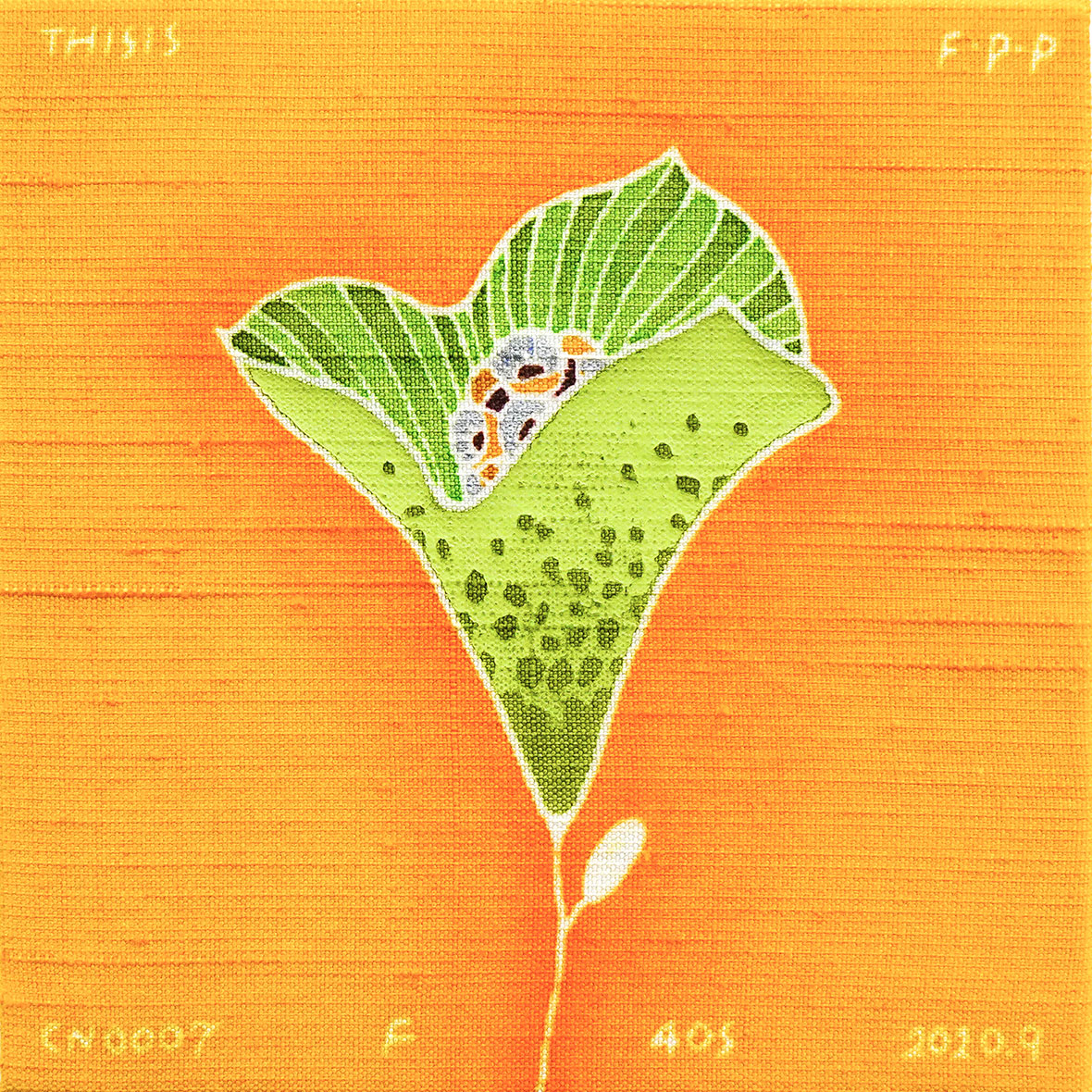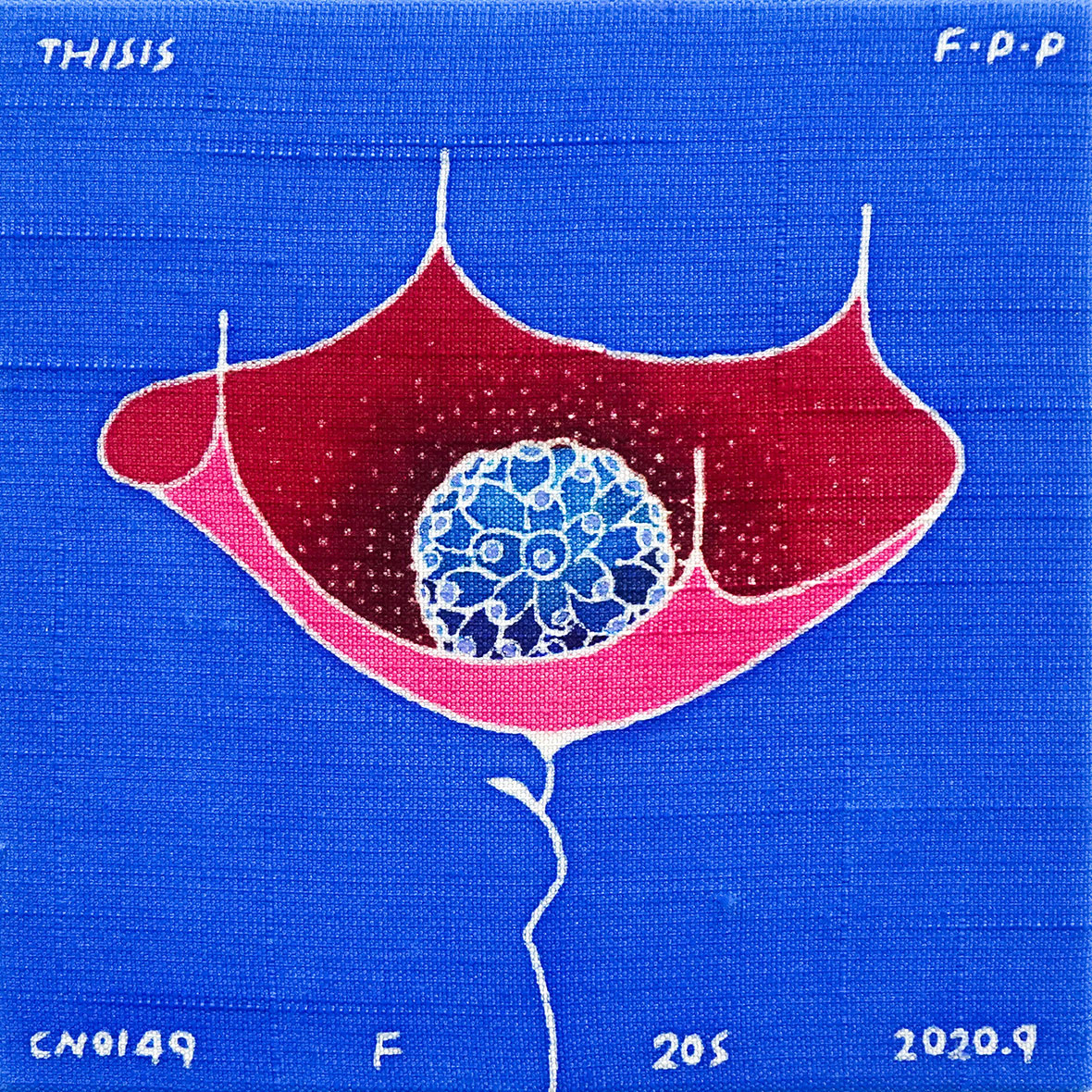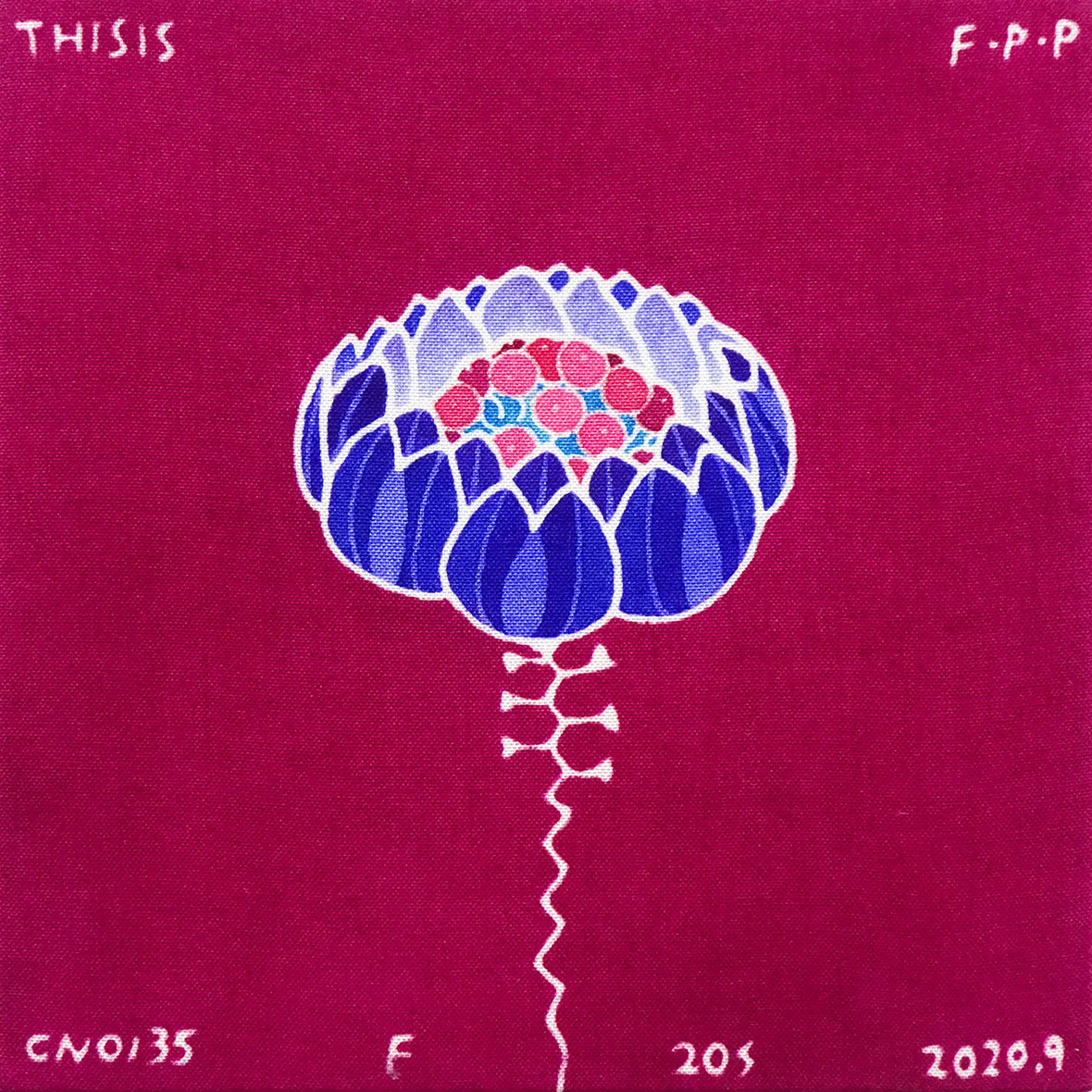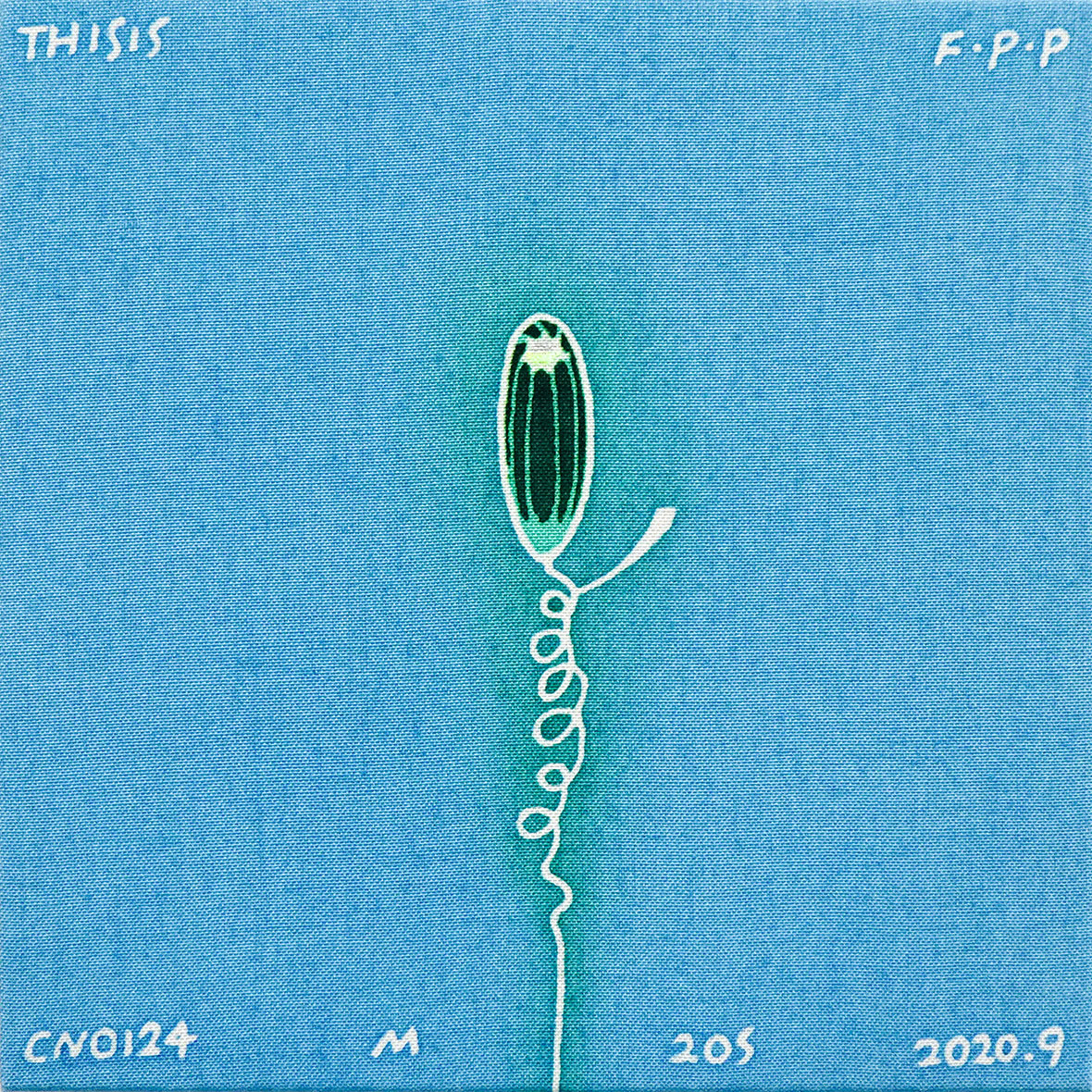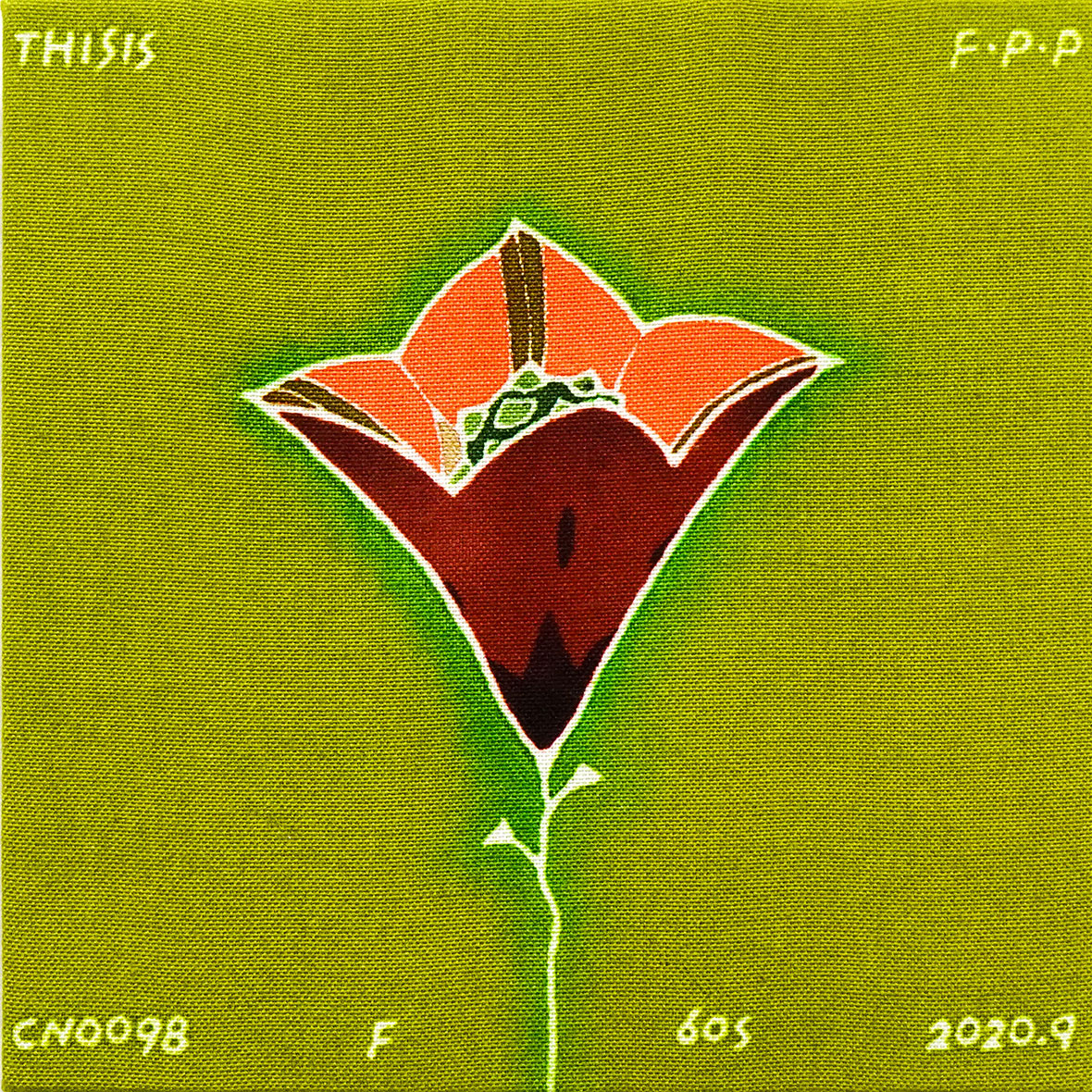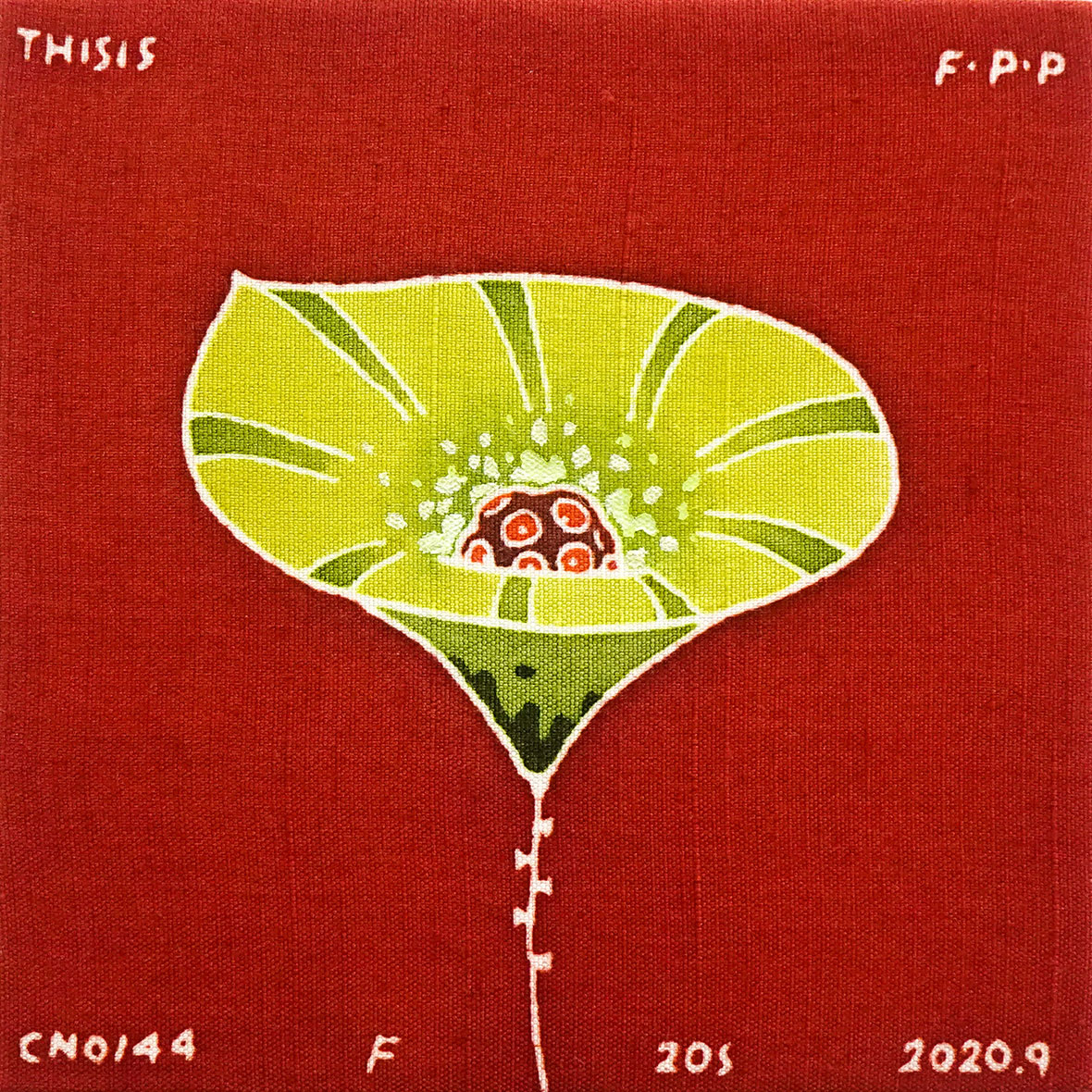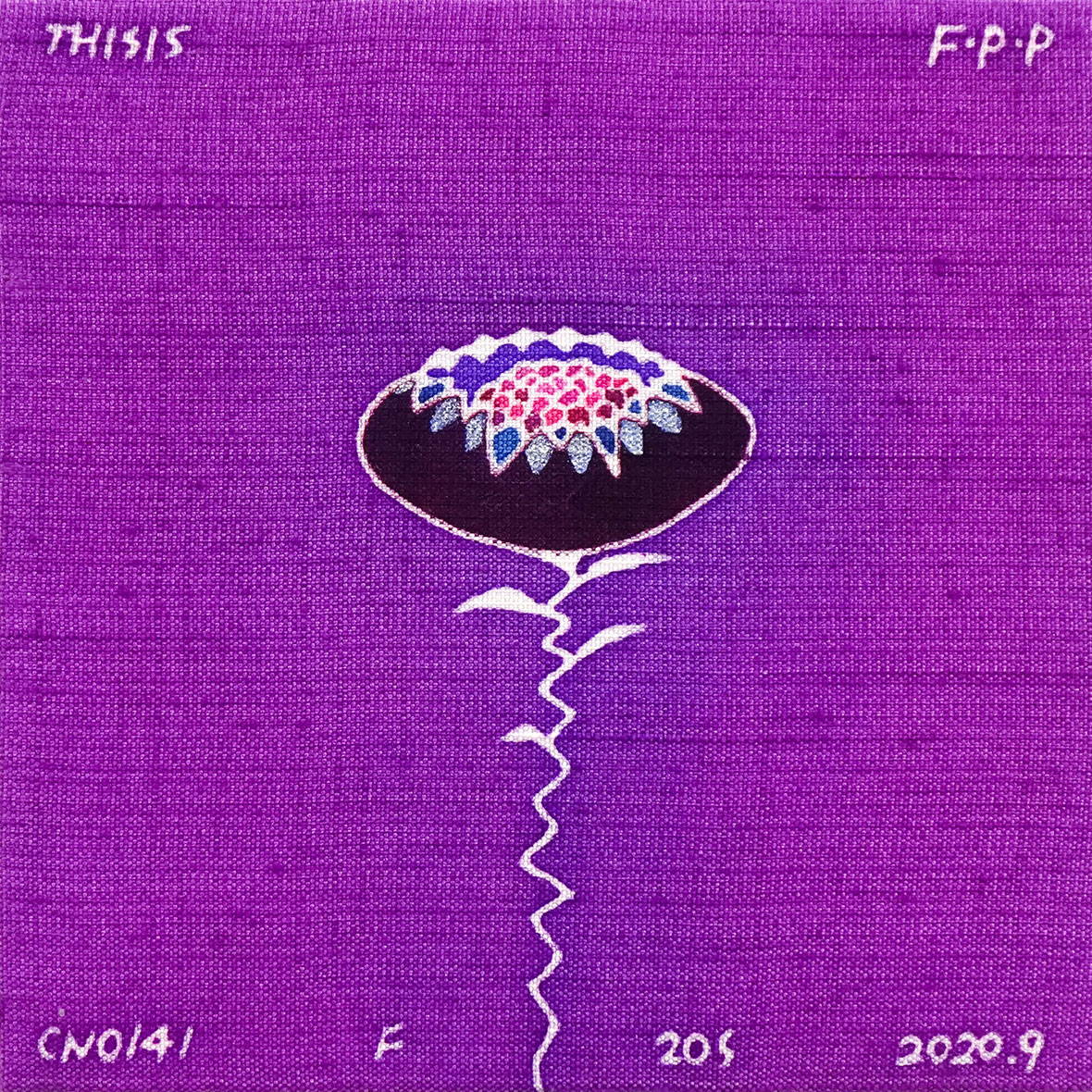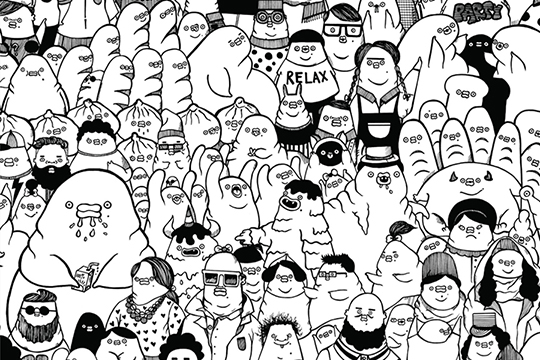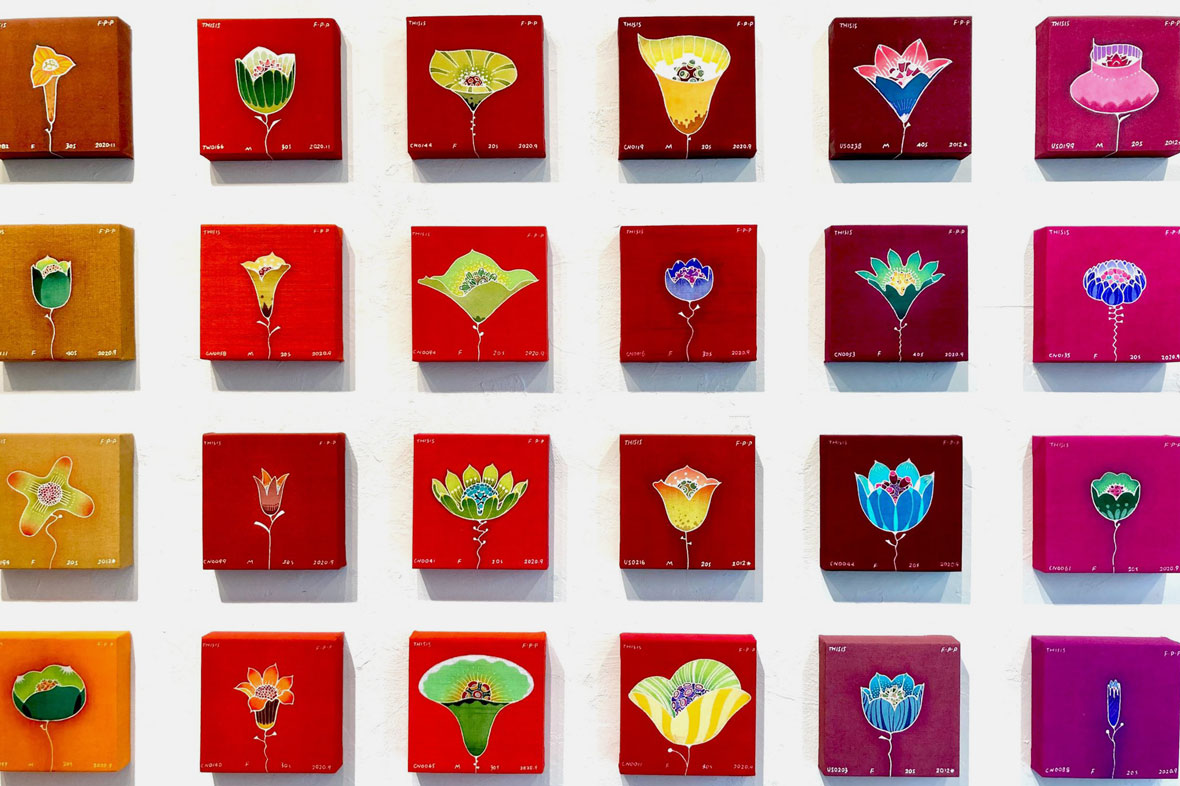
People are multilayered, and no two individuals are the same. This also stands true when it comes to flowers, and it became the line of thinking that sparked the idea for Chinese artist Zeng Siqin’s Flower: Portraits of Personality. The project features different forms of floral life, and they were all created based on computer-generated palettes matched up with different personalities. It all began with a question: “Is there way to give shape and form to human nature?”
With this question as the starting point, she found inspiration from the likes of Xiang Fan and Laurie Frick, data artists whose works offered a eureka moment: data can presented in beautiful, visually engaging ways.
人类性格各异,冷暖不一,如果将千万种人间性格抽象成花卉,会是什么样子?曾斯琴的《人间花像》系列作品,用基于数据生成的颜色鲜艳的花像,在带给欣赏者视觉享受的同时,向人们给出了答案。这些花像在东京艺术大学展出,按彩虹色谱排列,在雪白的墙体上相互映衬下格外上镜。
《人间花像》来自于她的灵光一闪。某天她突然开始思考:是否能找到一种可量化的方法,用不失艺术美感的形式,把形形色色的“人间性”具现化?后来这个想法被用在她的毕设创作上,在受到向帆、Laurie Frick 等当代视觉艺术家的启发之后,她很快明确了自己的创作思路 —— 数据可视化。
Using WeChat, China’s most popular form of social media, Si invited strangers to take part in a personality survey, creating a database of personalities that she then organized, analyzed, and assigned with ratings. Feeding this information into a program that she designed specifically for this project, the algorithm churned out different colors based on each participant’s personalities.
As for the visual motif that would serve as the vessel for this data, that took a lot of deliberation. She eventually settled on flowers. “When we talk about someone’s personality, it’s easy to generalize,” she explains. “It’s either you have a bad personality or you have a good personality, but it’s not this black and white. Everyone is unique and I believe there’s no set standards to judge someone by. It’s like flowers, they come in all shapes and forms, but it’s hard to objectively say whether one is more beautiful than another.”
Flowers are also often viewed in a positive light, and Si believes that these positive connotations are very much in line with the message she wanted to convey about human personality. “The main theme of my art is about the kindness of men,” she says. “Everyone is a flower in their own right. No matter the personality, humans bloom into their own and add color to the world. Because of every person’s existence, the world is brighter. Everyone should feel confident about themselves.”
她在微信上招募志愿者,让他们填写人格测试问卷,然后再将获得的数据整理、分析,按某个标准去量化评级,再设计一套算法,将数据输入程序,就能获得每个人独一无二的性格特写。
但究竟应该选择什么载体呢?曾斯琴苦思冥想许久,最终敲定了“花”这个答案。“人们谈论性格的时候,总是容易二元化。比如你性格很好,他性格很坏,那个人性格又怎么怎么样……但其实不是这样的,每个人的性格都别具一格,没办法用这套标准评判。就像花,千百种模样,但你很难说出它们是好看还是不好看。”
此外,她还认为花带有积极的、正面的意象,与作品主题十分契合:“我的主旨就是,我觉得每个人都很棒,大家其实就是一朵朵花,无论你性格是所谓的好还是所谓的坏,你都是为这个世界增色的。因为有你的存在,才会让世界更多姿多彩,每个人都应该自信起来。”
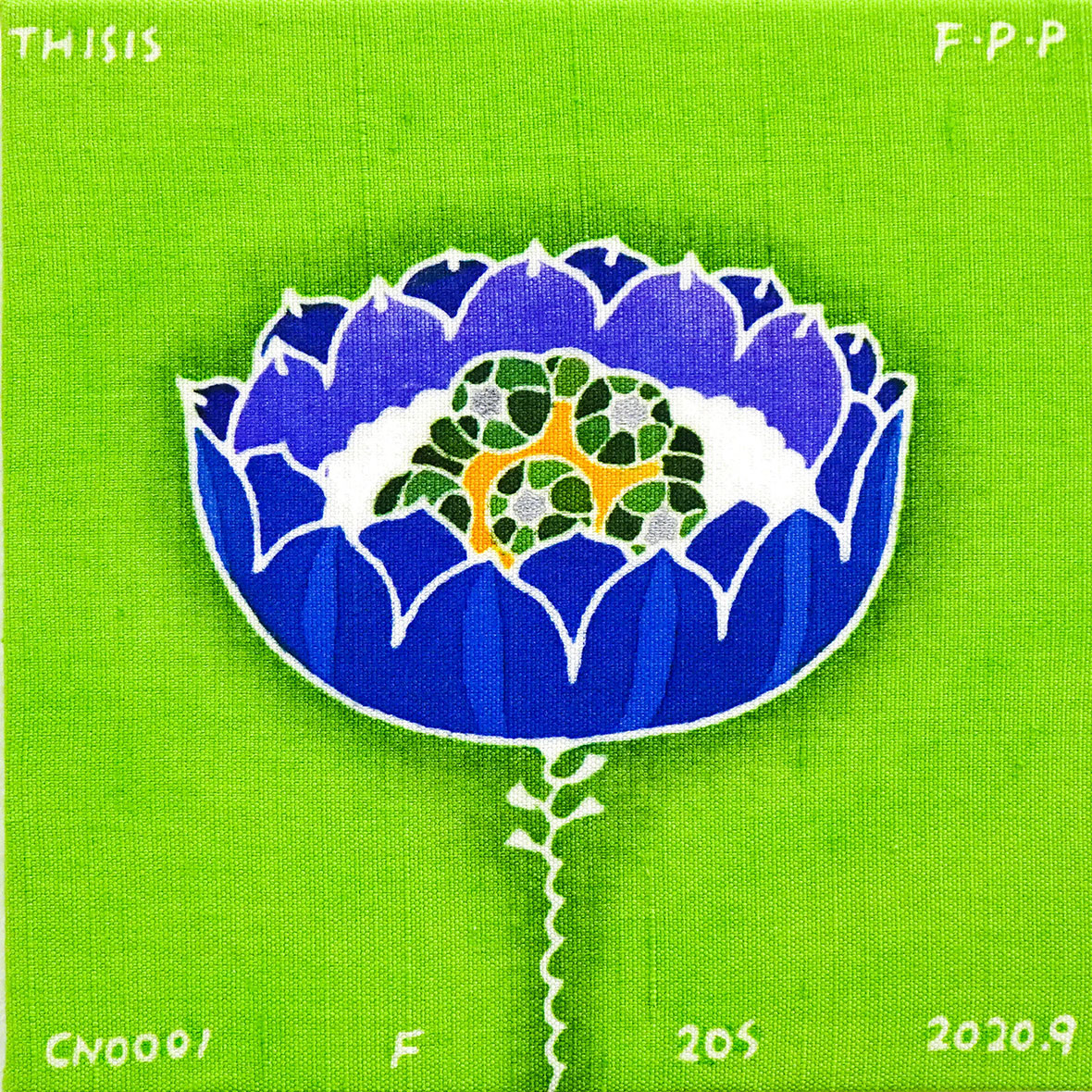
This optimistic outlook can perhaps be traced back to her teenager years, where the encouragement of her parents and teachers set her off on the path of art. Si was taught traditional Chinese painting at a young age, but she only pursued it as a hobby. Making art was hardly anything of lasting interest. In her sophomore year of high school, Si’s mom decided to send her off to Changsha with her brother to finish her studies, but the school didn’t have an art course. She decided to attend art classes outside of school once a week. As time went on, her artistic abilities caught the attention of her teacher. “He said that I had a talent and that he was sure I had the potential to go to Tsinghua University’s art program one day,” Si recalls. “But I still wasn’t really interested in it at the time.”
Surprisingly, another teacher further encouraged her to follow her artistic talents. This support was what gave Si a change of heart, and consider art as a viable path. For her, switching her main area of study to art with only one year left to the Chinese national exams was a road paved with difficulties. Her parents stood with her every step of the way.
She eventually landed a spot at Tsinghua University, which hosts China’s most sought-after art program. There, she completed a graduate degree before heading overseas to further her studies at the Tokyo University of Arts. This trajectory might make it seem like her success came without hindrance, but this isn’t the case. Even with her academic success, self-doubt kept creeping in.
She often questioned herself: “Am I truly an artist?”
如此豁达的心态要追溯到她青少年时期,那会儿在老师的鼓励下,她才走上了艺术创作的道路。曾斯琴自小开始学国画,但她只当作兴趣发展的,对“艺术”这个词并无实感。高中时,因为弟弟在长沙读书的缘故,妈妈决定让她也去那儿完成她的高中学业。她转入的学校开设有艺考班,高二那年开始,她每周都会去一次画室。随着时间推进,她的艺术才能再次崭露出来,画师的老师也对她青睐有加。“老师那时候说,觉得我挺有天赋的,成绩也挺好,如果文化再抓一把,上清华美院应该是没什么问题的,她说得很肯定,应该是对我很有信心,但我那时候完全没有艺考的想法。”
有意思的是,之后她的文化科老师也加入到支持她参加艺考的队伍中,这才让事情出现了转机——斯琴第一次开始认真考虑走艺考这条路。对于只剩下一年时间备考的她,从文化生转艺术生,并不简单。但是,父母给了她很大的支持,“上清华美院这件事情看上去像几乎预定了一样,我动摇了。”她说,如果不是因为这个契机,她只会是一名普通的理科生。
于是她不负众望地考上了清华美院,进修学习,考研,出国,前赴东京艺术大学深造工艺学,探寻工艺与艺术的深层关系……这在许多人看来,或许已经是接近“爽文女主”的人生赢家式经历,可望不可求。但在曾斯琴本人看来,却截然相反。这段顺风顺遂的艺考路,反而让她一度陷入深深地自我怀疑:
“我,真的是个艺术家吗?”
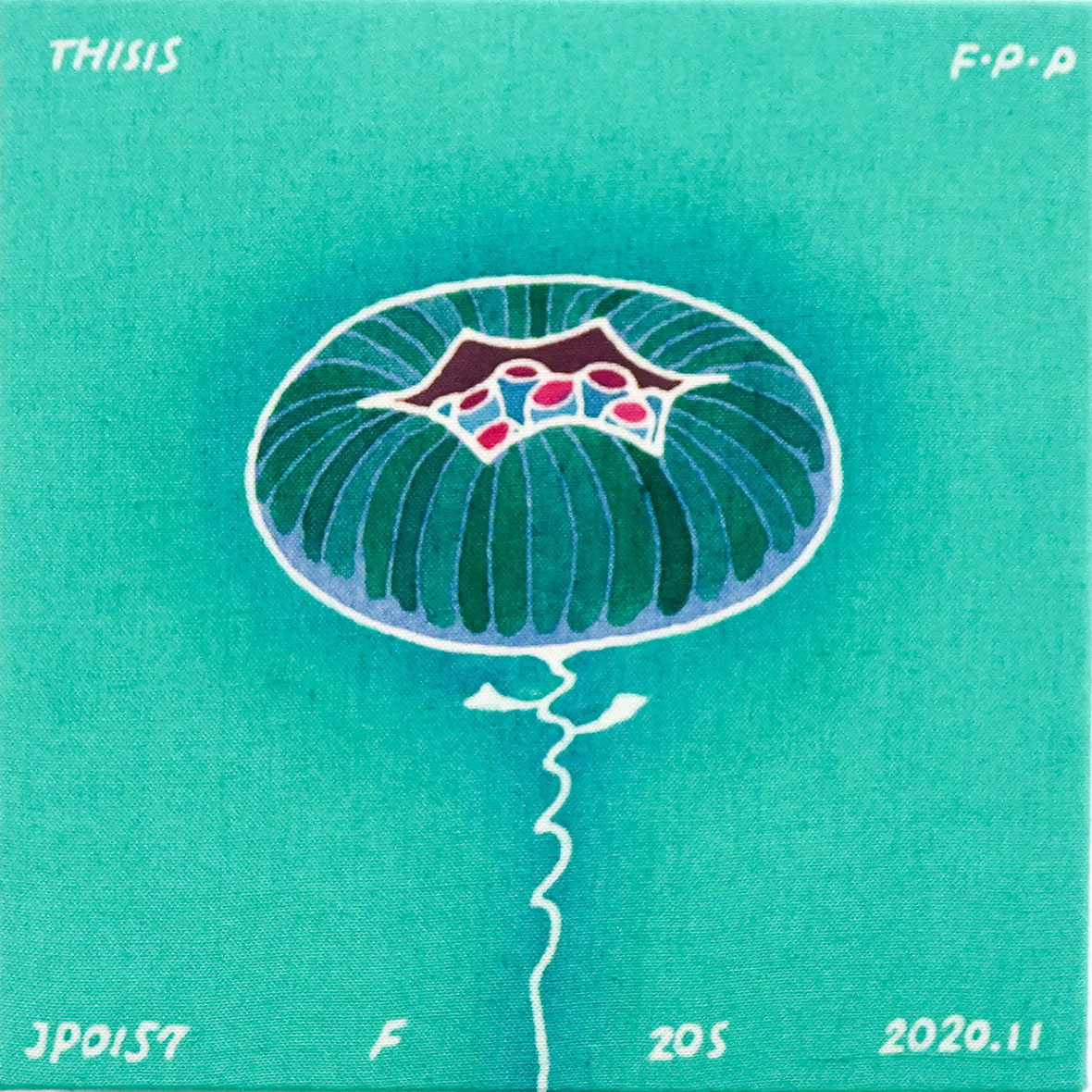
This doubt is actually nothing new. It’s a question that’s popped up in her head time and time again throughout her six years of art studies. Although she excelled academically, she didn’t feel like she was a particularly gifted artist. “Exams at art school are just practice for technical skills,” Si says. “It’s about building a foundation, but we’re not really creating art. I hadn’t drawn anything of my own in a long time, and exams are just about drilling repetitive knowledge.”
Si says that these methods may sometimes feel detrimental to true artistic development. There is a certain energy and spirit to artistic creation, which she believes can’t be taught. “To a certain extent, art school and exams may even stifle creativity,” she says.
实际上,她不是第一天产生这个疑问了,在长达六年的艺术学习中,她一直在质问自己这个问题。虽然在艺考道路上一路出彩,但她觉得自己并不具备被称作艺术家的条件。“艺考更像是技能练习,为你打基础,但和艺术创作真的没有联系。我已经很久没有拿起铅笔素描了,艺考为你带来的是机械性的重复练习,比起艺术创作的勃勃生机,我觉得这反而与‘培养艺术家’的思想背道而驰了,虽然不太好听,我觉得艺考一定程度上会扼杀人的创作性。”在她心里,她充其量只算个 “搞了点不值一提的小创作” 的人。
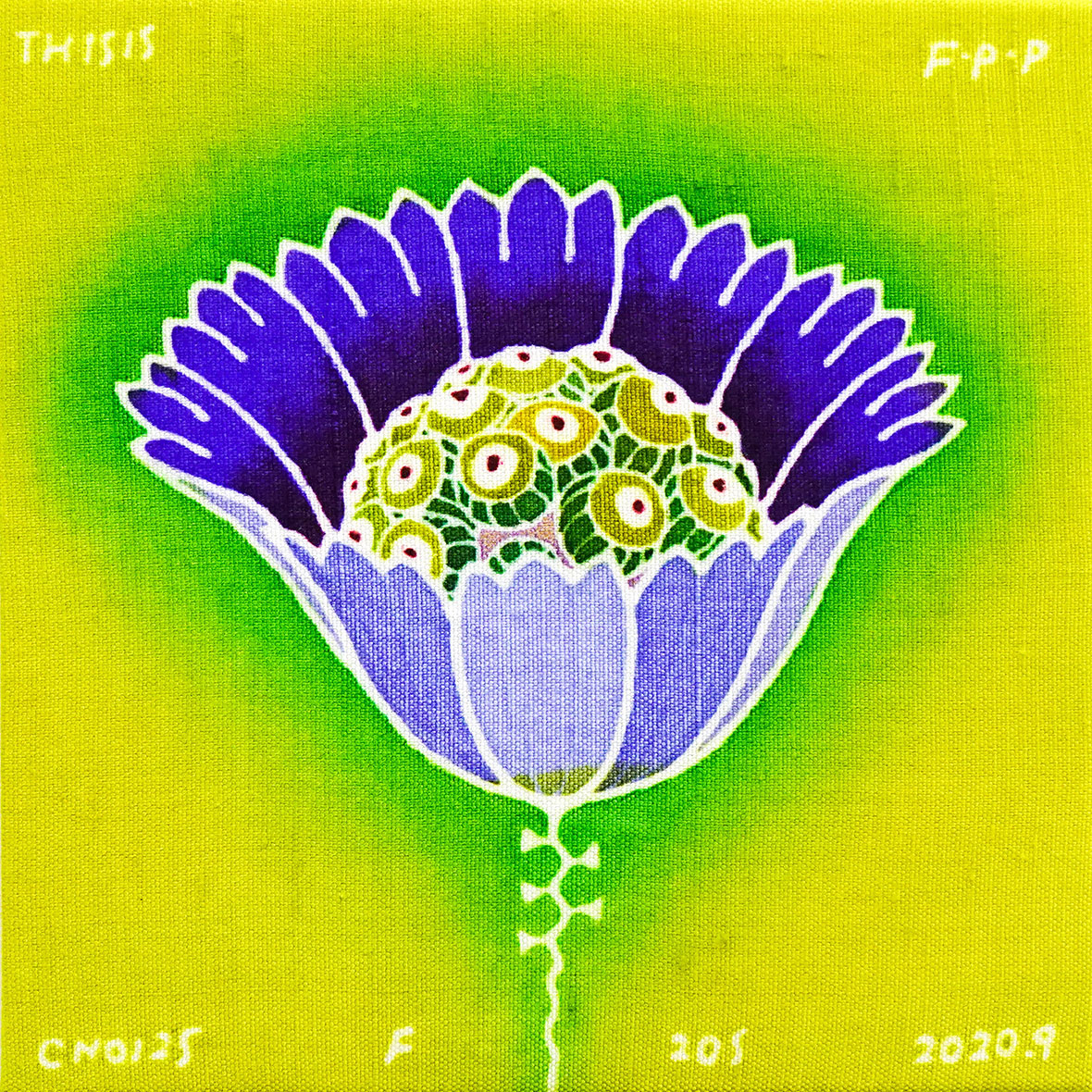
To her, there are major differences between a “creator” and an artist. To be classified as the former, they must have a strong concept or emotion, and that must be passed on to viewers. “To be an artist, the work must facilitate an open dialogue between artist and audience, one that’s spiritually resonant,” Zeng says. “It must also come with a sense of originality, and the work must be creatively fulfilling.”
To her, Flower: Portraits of Personality meets a number of these criteria. There were a lot of hurdles to overcome in achieving her vision though. “It was hard to make everything cohesive because there was so much I wanted to include,” she recalls. “I had to think about how to solicit the personality data, how to quantify it, how to turn that data into a floral motif, and how these images would be presented. These were just some of the issues I had to keep in work out.”
A pragmatic approach was her earliest method. Collecting and analyzing the data were the first steps, and, surprisingly, was one of the most enjoyable parts of the project for her. She surveyed people using the Big Five personality traits, a theory that identified five factors of an individual’s personality to form a picture of their personality. This system scores a person based on their openness to experience, extraversion, agreeableness, and neuroticism. This method-driven approach seemed to make the most sense at the time, but little attention was given to how the data could be shown in more interesting ways.
“It was all about expression!” Zeng says. “I thought it was enough to have a strong theme in a piece of artwork, so I didn’t think about how to make it even more visually expressive. ”
This methodology was criticized by her teacher at the time. “He said I was too logical, and that artworks should not be so rigid. He said this isn’t scientific research; this is art, and that art should focus a lot on visual expression,” she recalls. “It was more important to work from the heart.”
她还谈到了创作者与艺术家的区别:“我觉得创作者和艺术家的区别大概有三个吧,一个是你要通过你的作品倾诉一个想法、一种理念或情绪;第二个是你要通过视觉和鉴赏者对话,达到心灵交互。再者就是你需要从你的艺术创作里面获得成就感和新鲜感,无法收获观者反馈以后的欢欣鼓舞的话,多半是走不远的。”斯琴说,她一直没有放弃追寻艺术创作的意义,她的最终目标,就是成为一名实打实的艺术家。
“而这之中我觉得视觉真的很重要。”她继续说。“艺术创作其实非常依赖视觉,这是我的导师告诉我的,在我完成《人间花像》后往回看更是如此。”
她回忆到,项目刚开始的时候,自己踩了不少坑。“把这个作品呈现好很难,因为每一个环节都有太多值得说道的地方了。性格的数据从哪儿来?用什么标准去量化?怎么把这些数据有机组合成花朵的图像?图像要如何呈现呢?有什么章法?剩下的问题还有很多很多。”
比如,她最初追求“实用主义”,在创作《人间花像》时,她更偏爱数据的收集与分析处理,以及如何实现具象化的表现方式这些理论层面的部分,认为作品的美感形式不重要。对于“花”的表达,也仅仅是停留在用色块和色彩堆叠而来。 收集数据的过程中,她使用 “大五人格理论” 支撑,该理论认为人格可以用五个主要特征来进行描述:开放性、责任心、外倾性、宜人性、神经质性。性格中这些特质所展现的不同程度,造就了我们每个人的不同。不过对于斯琴来说,如何将这个所谓的“程度”进行有趣的可视化,是需要攻克的难题。
“重在表达嘛!”斯琴说,“我本身觉得,一件作品,有好的内核就已经很足够了,不需要去太注重美感的表达。”但很快,这个想法就遭到了导师的批评,直言斯琴有点过于理论武装。“他说我太喜欢讲道理了,艺术作品不应该那么死板,这不是科学研究也不是什么田野调查,这是艺术,艺术就应该很多注重视觉表达,要‘从心而作’。”
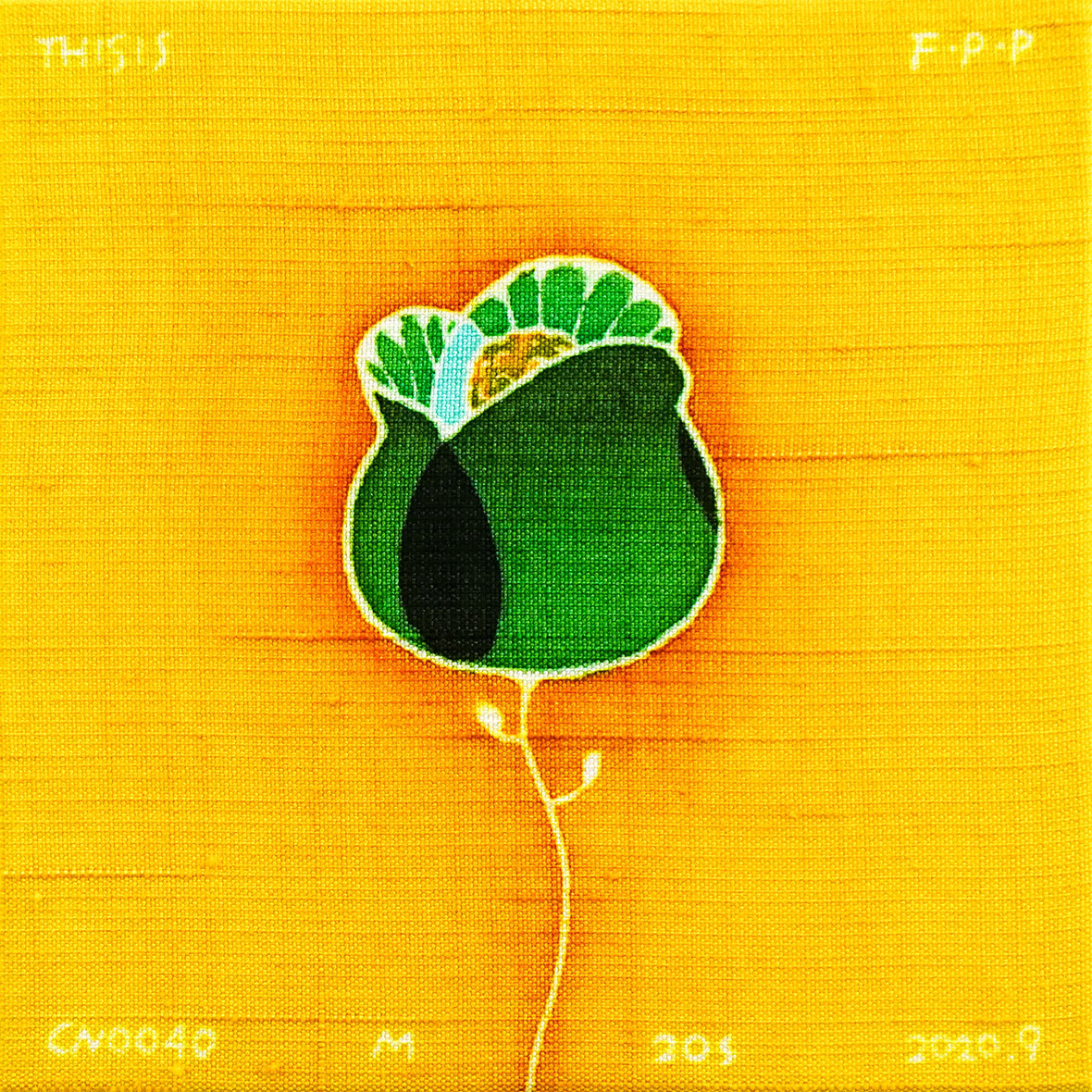
This also made her acutely aware of the differences between her creative process and that of many of her peers. Other artists, as she observed, often worked with artistic intuition, which she felt like she lacked. This doubt led to a lot of second guessing and confusion about how she would rework the project from the ground up. In the end, she decided to break each flower into five sections, which was in line with the Big Five personality traits.
这也让她深深地觉察到自己与很多艺术生存在思维差别,她觉得很多艺术创作者都是用文科的感性思维去创作的,而她不太擅长,这就给她的创作过程带来小摩擦,经常感觉被束缚了手脚。
确定了要重新规划视觉设计,新的难题又摆在她面前:要如何设计花的结构呢?需要分几个部分?花朵的高度、花瓣的数量又该设定怎样的标准?最终她将花朵拆解为五个部分——以此与 “大五人格理论” 呼应。
Yūzen, a resist dyeing method that originated from Japan’s edo era, was chosen as the medium Zeng would work with for this project. Unlike traditional dyeing, this method not require cloth to be dipped in a solution before dyeing. Instead, yūzen artisans would work on silk directly with a brush, creating delicate and airy textures. “It has very distinctive line work and share some parallels with traditional Chinese painting,” she explains of the method. “Because of the similarities, that was what I decided on.”
After designing the initial patterns for the flowers, she dyed and washed the silk all by hand. This DIY process felt tremendously rewarding, as it allowed her to be fully in the moment and immersed within each piece. Yūzen can be incredibly time consuming, but there are still many artists in Japan who work with it. She feels that this perseverance in traditional craft is something that every country can learn from.
After the artworks were completed, she was equally eager in being involved with how they’d be displayed. In her exhibition at the Tokyo University of the Arts, these works were arranged in a chromatic gradient that made for a stunning rainbow-like arrangement. “When the show was on display, I was there the whole time,” she recalls. “It was amazing being able to watch the visitors, seeing them come, stopping in front of a certain flower, and telling a friend how much it resembles them.”
在完成视觉布局后,曾斯琴则需要考虑更具体的表达方式。作品风格的呈现上,她选用了日本的 “友禅染技法” —— 这是日本江户时代一种传统的印染工艺。与传统技法不同,友禅染不需要将布浸于染液染色,而是可以直接用笔在绢布上作画,纹理细腻雅致。“友禅染这个东西线条很分明,和国画其实有共同之处,我觉得它们相性契合,去了日本毫不犹豫就决定学习它。”
在将花朵的图案打样好后,其余所有步骤,包括染色、水洗,都由斯琴亲手在绢布上制作。每一幅作品都饱含她的用心,她也乐在其中:“做工艺花时间之外,其实自由度很高,和画画一样,真的很棒。
这项染织技术古老费时,但在日本,仍有众多染织艺术家用这种传统方式进行创作。工艺是慢过程的,来不得半点儿急躁 —— 一件工艺作品往往要花很多实践。在完成《人间花像》后,曾斯琴如释重负。毕业展策展时,她也参与了布置。只有沉浸在忘我的工作中,才能让她从紧绷焦虑的状态得到缓解,像闹钟一般把她的身心唤醒。
“展出的时候,我全程守在摊位,看到一个个访客过来,停下来,观看,直到看到某一朵像自己的花,激动地和朋友说:‘你看你看,这个真的和我很像!’或是:‘看,这个和你很像。’的时候,我心里面有种说不出来的喜悦。”

At the show, some visitors would approach Zeng and ask for explicit explanations on the personality types shown in specific pieces. Even though each work does have a corresponding personality, she hoped for there to be some ambiguity. Giving a concrete explanation for each work seemed to defeat the purpose, as she had also envisioned for this project to promote the message of admiring the beauty of every person’s individuality, looking past prejudices and generalizations.
The exhibition ended up being a hit, with her receiving a nomination in the Emerging Young Artists category from the Kuma Foundation, a Japanese non-profit organization dedicated to empowering the next generation of creatives . The Tokyo University of Arts even ended up paying 30,000 yen to purchase a portion of the project for its personal collection. Though Zeng was initially hesitant, since it means that these works would no longer be available to the public for a period of time, she eventually agreed.
“I was a bit sad because I poured a lot of blood and sweat into finishing this series, and it was only on display for five days,” she says. “I’m proud of how it was received, but I’m also a bit conflicted because I want these works to be shown to more people. My friends convinced me, since not a lot of artists have had the honor of entering its collection, so I said yes.”
As for whether Zeng has found the answer as to whether or not she can be truly considered as an “artist,” it’s hardly important. Regardless of how she’s classified, there’s never time for complacency. She’s more ambitious than ever. She says that she has little interest in commercializing her art in the future, and she ever returns to China, she hopes to work in a university as a teacher, so that she could help nurture the next generation of Chinese artists. “With my experiences, I now realize that everyone has a lot of potential for art,” she says. “They just need their potentials to be stimulated.”
不过,让她最记忆犹新的,还是访客的普遍反应。“更多访客会站在摊位前,驻足,凝视,许久后指向一朵花像,询问我这朵花代表的性格,以及其好坏,我会有些愕然——因为我不知道是否真的有必要为他/她解释清楚。我当然可以阐明背后要义,但《人间花像》的初衷,就是为了去避免性格的评定。我想避免比如开放、沉稳、跳脱这样的评价,我希望每一个观展者能自己在心中产生一套感觉体系。正如我们和每一个人相处,都需要用心感受,那无法窥见的共鸣。而这样的诘问只会让我感到无奈。”不过,这更让斯琴觉得做这个作品是有实际积极意义的,“我们需要开个好头,来破除这种性格偏见。”
这次展览,也让曾斯琴的导师对她刮目相看,他没有想到《花像》能取得这么好的效果。斯琴还一度拿到了日本 KUMA 财团的新锐艺术家提名。更重要的是,校方决定用 30 万日元收录她的部分作品,代价是可能未来很长一段时间内,作品都没办法再展出了。曾斯琴思忖了很久,还是答应了。
“我其实还挺心疼的,辛辛苦苦做了大半年的作品,只展出了五天。虽然这件事让我感到很荣幸,但我也很纠结,我是很希望我的作品能够随便展出的。不过很多朋友劝我机会难得,我答应了,因为历史上没几个毕业生能有此殊荣。”她再次感受到艺术理念被他人认同的喜悦。
对于是否可被称为“艺术家”这件事,她心里已经有了自己的答案。
从那以后,她并没有沾沾自喜,反而选择继续出发,去追逐更远大的目标。她说,她对工艺商业化兴趣不大,如果有一天回国,她希望回到高校当老师,回到自己最喜爱的学术氛围中去,继续发光发热。
对于这次创作,曾斯琴说:“人人都能被塑造,经过这次创作之后我也意识到每个人的潜能可以被放大。” 她还希望能尽自己绵薄之力,让更多人了解并参与数据可视化这块领域,与大家共同营造一个积极的氛围。
她的想法或许有些乌托邦,但在她身上,早已看不见“不可能”三个字。

